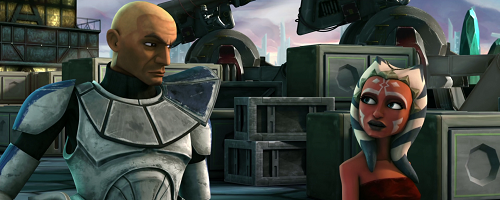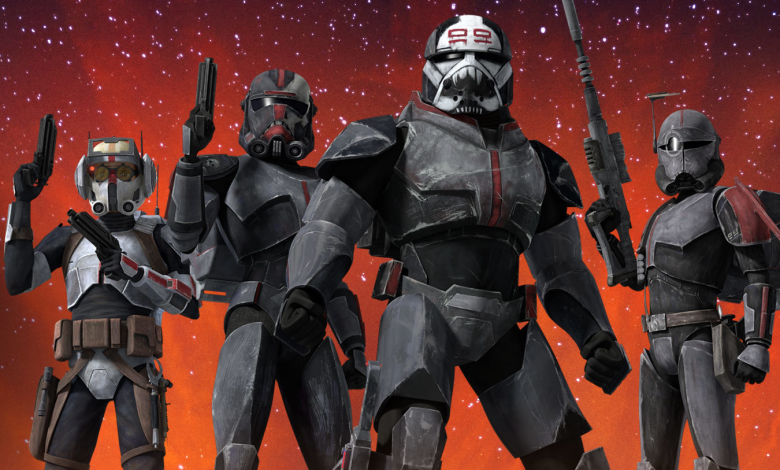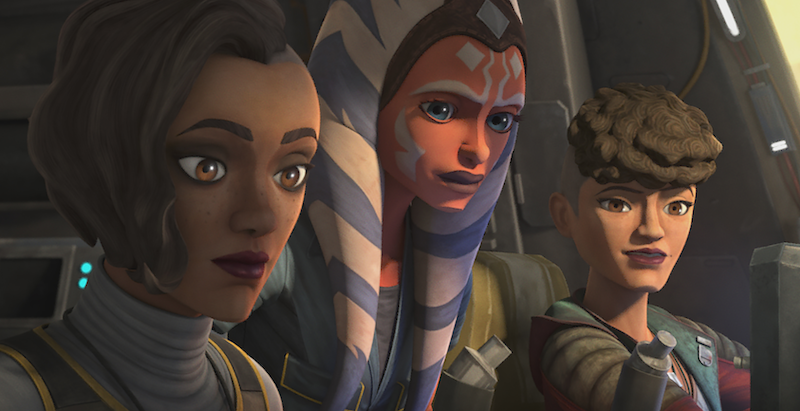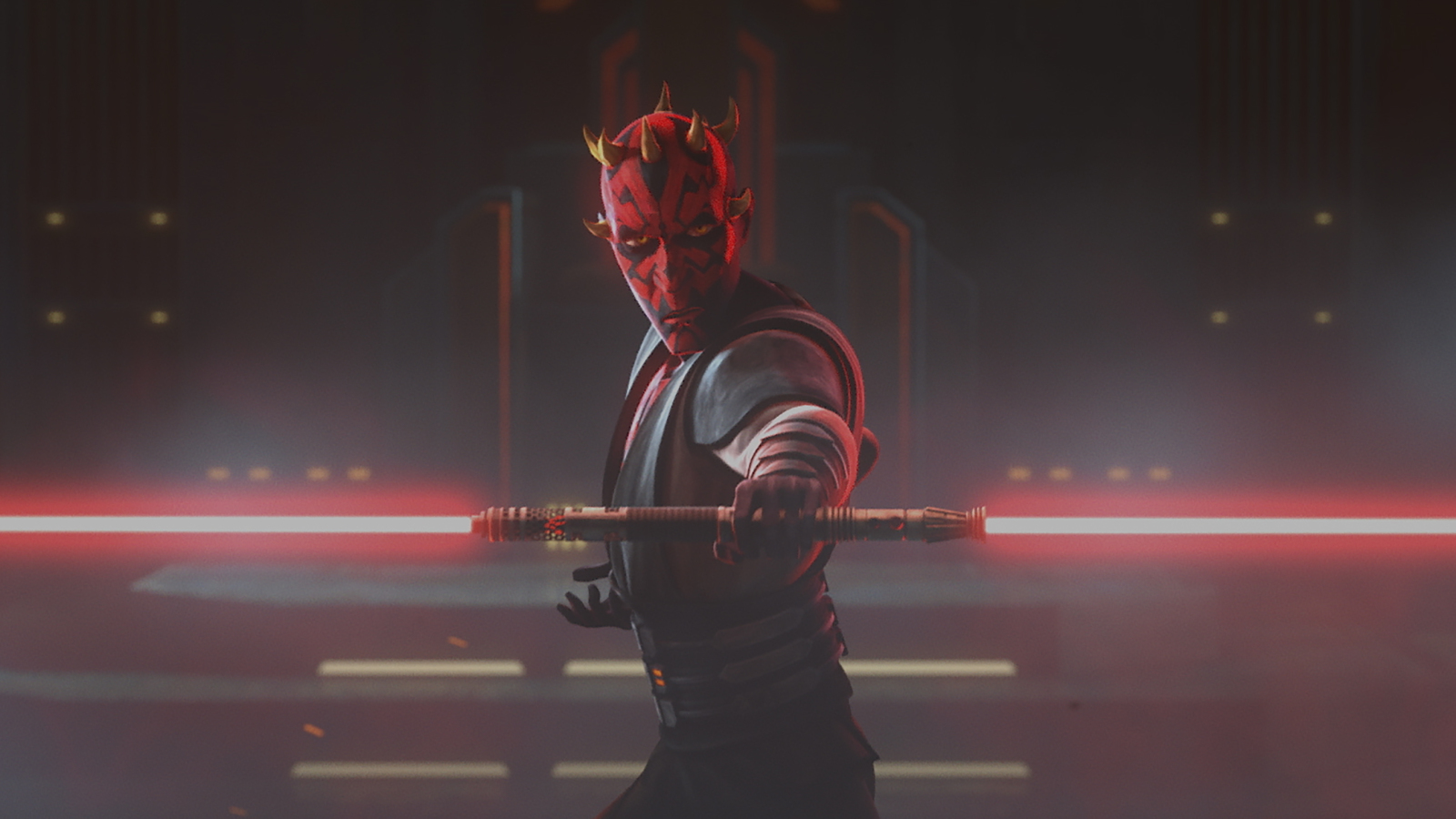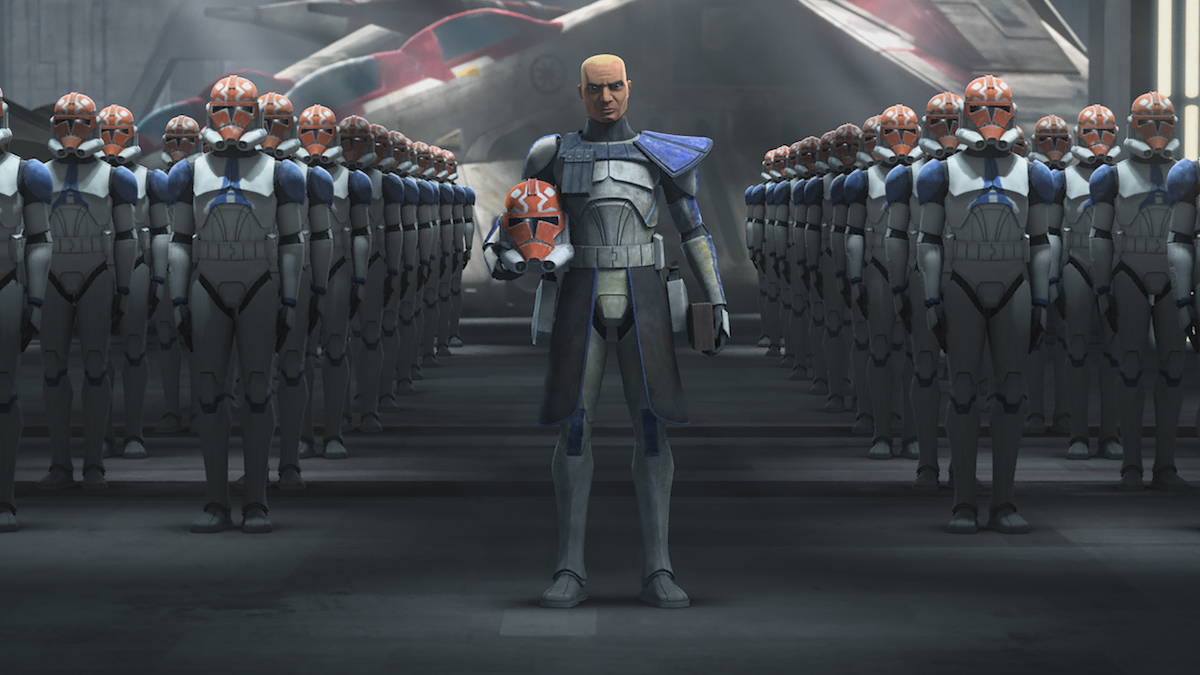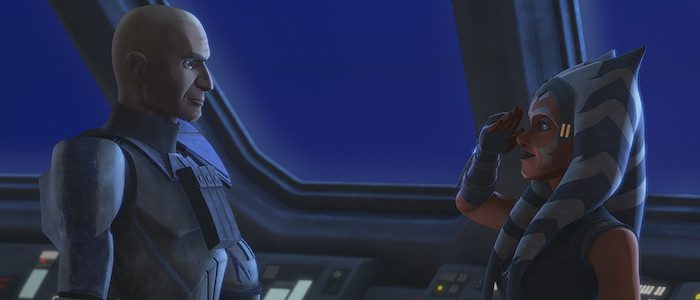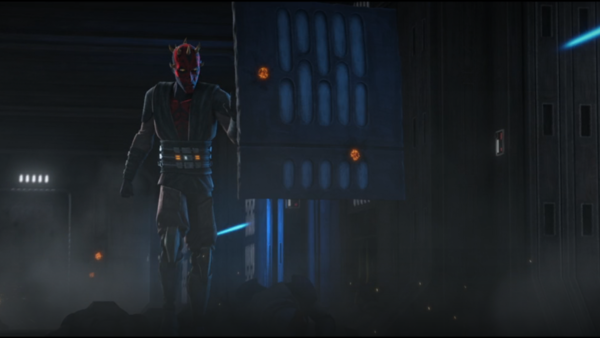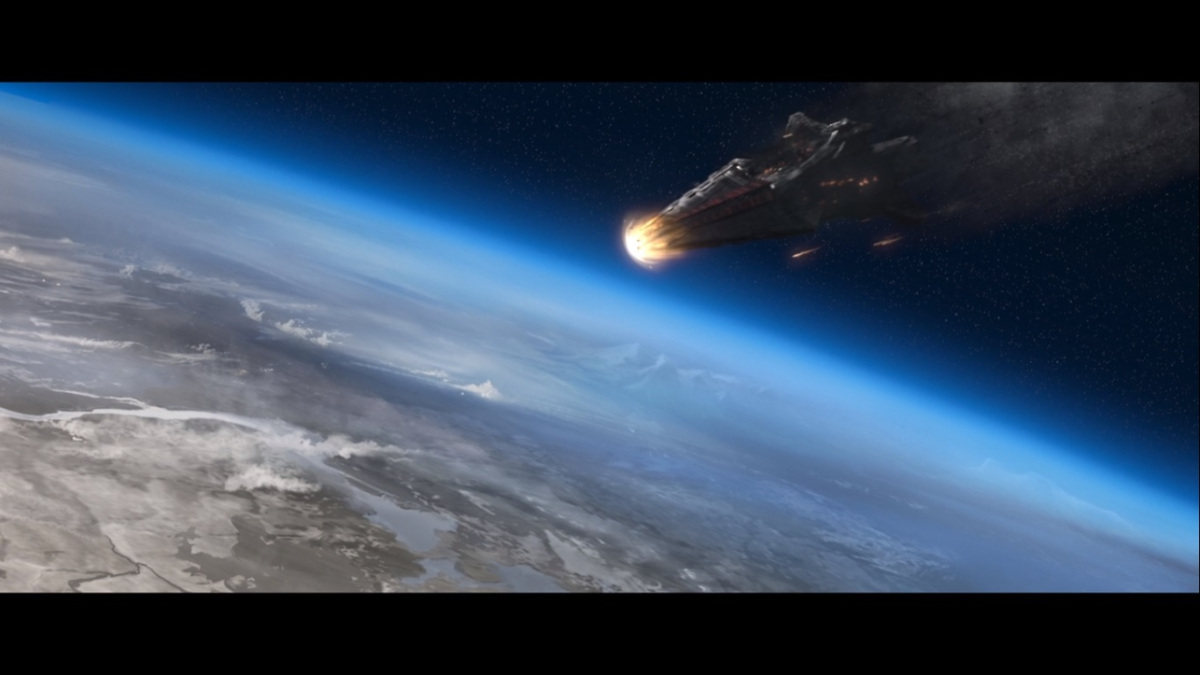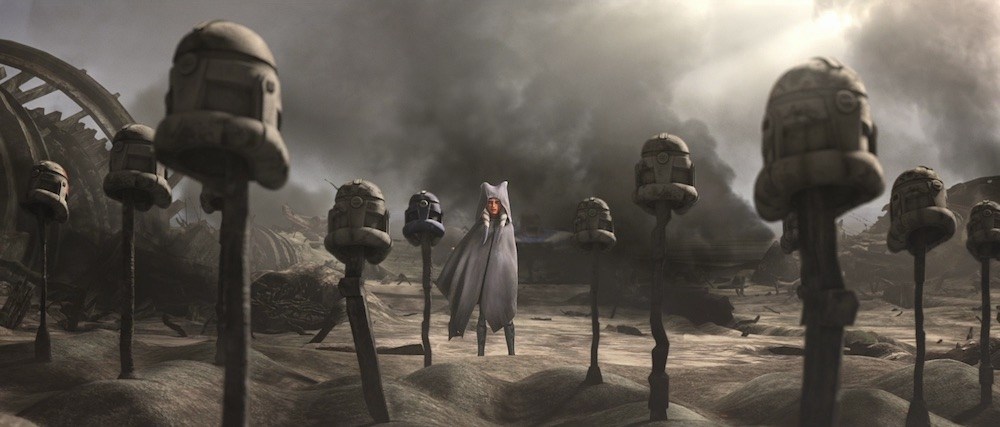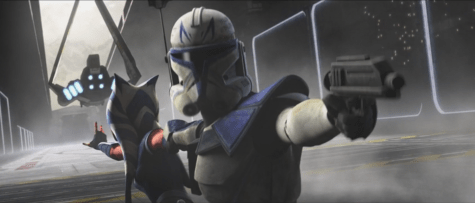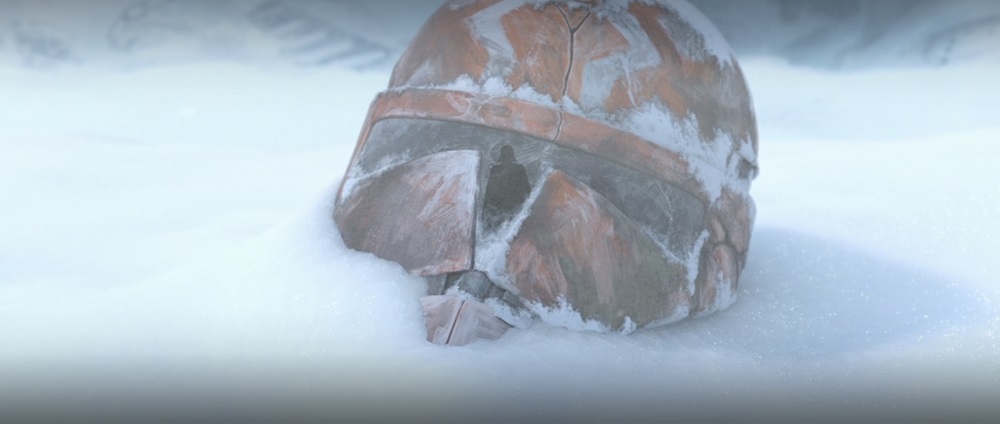Star Wars: Clone Wars Ends, Redefines Itself, Sticks The Landing
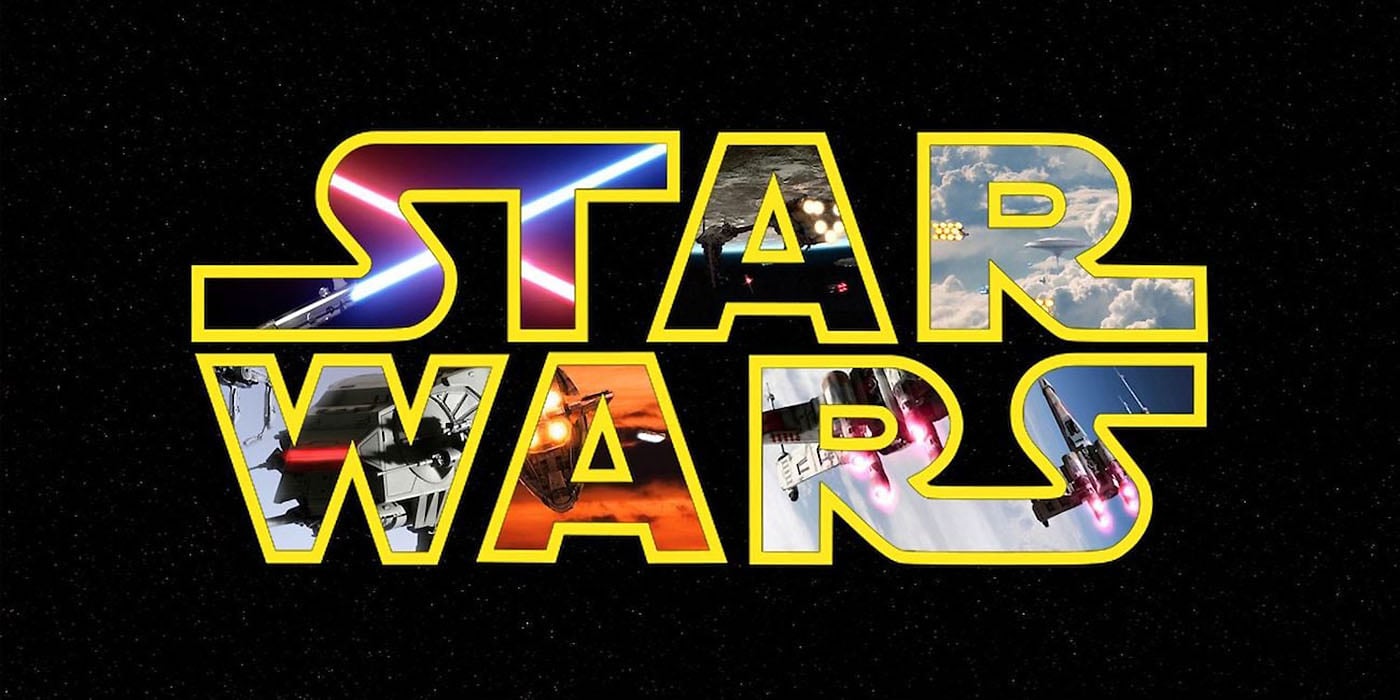

Let’s chat about the perfect ending to Disney’s The Clone Wars.
This week after 12 years, seven seasons, a movie, two cancellations, multiple platform changes, a canon change, and a buyout, Star Wars: The Clone Wars came to an end. Despite a rocky start, The Clone Wars grew into a beloved and essential part of Star Wars. It introduced long-running characters that have gone on to feature in other media and rehabilitated others existing characters. It not only pushed the boundaries of animation but how Star Wars could tell stories. At the same time, while it wasn’t the first animated Star Wars show it became not only the longest running but paved the way for Star Wars to break onto TV, without it there would likely be no Rebels, no Resistance, no The Mandalorian and no hope of other upcoming projects.
With such an ambitious and important show, there is always worry about the ending. Recent years have seen plenty of popular shows collapse at the end, from the maligned ending of Lost to the much more recent decline of Game of Thrones. Star Wars itself is no strange to faulty endings, months before this final season debuted the Skywalker Saga came to an end with a movie that at best could be described as muddled. Luckily, The Clone Wars not only managed a pitch-perfect ending, but managed one that redefined itself along the way. Let’s talk about that ending.
This Was Always Ashoka’s and Rex’s Story
The Clone Wars is about, well, the Clone Wars, the three-year conflict between the Galactic Republic and the Confederacy of Independent Systems. Over 133 episodes, the show told a variety of stories focusing on a large and diverse cast, from Clones, to Jedi, to Bounty Hunters, to Sith to even bumbling Gungans. There are a host of familiar faces here, Obi-Wan is snarky, Anakin slips into darkness, Palpatine connives, and Yoda is wise. With such an ensemble cast, it is tempting and easy to see the show as not being about any one story. It’s about the war or the fall of the Jedi, but there is no main character, no central figure, and arc.
How far they, and the animation, have come.
With its last season, the show redefines itself and makes it clear, despite a sprawling cast and varied story – what it was always about. While the show had many characters and told many stories ultimately, this was a show about the journey and friendship of Ashoka Tano and Clone Captain Rex. It’s a show that follows their growth and development throughout the Clone Wars. The show, after all, starts with the introduction of the young Ashoka as Anakin’s Padawan and her introduction to Captain Rex. This isn’t a show that begins at the beginning of the Clone Wars but with Ashoka’s arrival. And while the show takes many detours it always, always comes back to that central pair, until at last the final season slowly strips away everything else leaving only those two.
The Final Season
The 7th and final season of The Clone Wars is divided into three arcs, The Bad Batch Arc, the Martez Sister arc, and the Siege of Mandalore arc. Some commentators have said that the first two arcs are a bit of a waste, they don’t do a ton to move the story on, have only minor lasting repercussions and aren’t nearly as focused as the final arc. Thematically however, they are of utmost importance to the themes of season 7 and the show as a whole and serve to focus the story on the two main characters.
The Bad Batch
Taken at face value, the Bad Batch Arc is about Rex and Anakin being joined by a newly introduced unit of elite Clones to save an old friend and turn the tide of a battle in the Republic’s favor. From that view, its a fun arc that lacks impact. It’s beautifully made, has great action, we get to see our favorite Clones and Jedi in action again, and it wraps up with a happy ending. However, it has little lasting impact on the story, the Bad Batch never gets mentioned again (in the Clone Wars), nor are there any other real changes to the status quo. This view is pretty misleading. Because at its core the arc isn’t about the Bad Batch at all, it’s about Rex, the toll the war has taken on him, how much he values friendship and the lengths he will go to to save and protect those he considers friends. Ultimately it’s about his character and his humanity.
It’s also, at the start of the season, our last chance to see any of the actual Clone Wars. Throughout the arc, we see Clones and Jedi alike cut their way, often seemingly with ease, through hundreds of Droids, Mace Windu even boasts that he’s killed over 100,000 B1s. The droids, the Separatists, are no longer a credible threat on the show, and that’s I think very intentional, the droids were never the real threat, never the real enemy, from here on out, while the Clone Wars goes on the story isn’t about the Clone Wars.
Martez sisters
The Martez Sister arcs are similarly misleading. On the face of it is a reasonably simple story about Ashoka, now no longer a Jedi, befriending and then helping a pair of sisters as they get caught up in some shady dealings. Like the Bad Batch arc, however, this arc is again more of a character study. It’s an arc about Ashoka, how vital friendships and loyalty are to her, and far she will go to save those she views as friends. It’s also about her dealing with her Jedi path. That the arc touches on the failures of the Republic and the Jedi, both in the small scale tragedy of the Martez sisters and the larger scale like ignoring mass slavery on Kessel or allowing organized crime to flourish, is also important to the central themes of the show.
The Siege of Mandalore
The Siege of Mandalore
After an arc focusing on Rex and one focusing on Ashoka, the two are finally reunited for the final arc in the show, the Siege of Mandalore. The arc starts with a reunion between the two and reaffirms their friendship, while Ashoka’s relationship to the other Jedi is strained; she has no misgiving about Rex. It’s also an arc that starts with a typically big cast, with hosts of Jedi, Clones, Mandalorians on both sides, and even a Sith in the mix, however as the arc progresses, all the characters are slowly stripped away leaving, by the end, just Rex and Ashoka.
The first half of the arc deals with the eponymous Siege of Mandalore as Ashoka, along with a force of Clones that have repainted their helmets in honor of her and rebel Mandalorians attack Darth Maul and his cronies on Mandalore. These two episodes showcase some of the best looking action in animation history, and by the end of them the Jedi and the Clones are triumphant; the war seems almost at an end. The arc again reinforces the friendship between Rex and Ashoka but also builds on their desire to save people. As Maul wages a guerrilla war, Ashoka desperately tries to stop him, racing to protect the clones she values from him.
More than that, the arc twists the knife of tragedy deep in our guts – we all know what is coming soon. The show deftly weaves in nods and connections to Episode III, giving us for one of the first times a solid connection and place in the Star Wars timeline. Worse, the show teases us with another way things could have gone, only to snatch it all away in the final.
The Perfect Ending
The final two episodes of the show are in my mind the perfect ending to the show. Shattered and Victory and Death take place as Rex and Ashoka attempt to bring Maul back to the Jedi temple; as they do so, Order 66 is carried out and everything falls apart. By the time the action in Shattered gets going the cast has already been paired down to Rex, Ashoka, Maul and an army of Clones. And it’s here that everything this show has been about and has been building up to comes together. It’s here that we really see that the show was never about the Clone Wars, or the Jedi, but Rex and Ashoka. The fate of the Jedi, the death of the major villains of the shows, the very end of the Clone Wars… it all happens off screen (or, well, on a different screen) it’s become a different story as one by one beloved or hated characters vanish out of this story. We see that this story, all along, has been following Rex and Ashoka, not Anakin, or Obi-Wan or even the war.
As the clones turn on Ashoka, Rex himself is forced to fire on his friend, thanks to the chip in his head. However unlike any other clone we’ve seen, Rex fights it, weeping and shaking and finding just enough strength to give his friend a final piece of information. It’s then that the character of Ashoka is truly revealed. Trapped and alone on ship full of friend-turned-enemies she frees Maul, the enemy without, that is suddenly far less of a threat than the enemy within. Maul gives her the chance to flee with him. There is little doubt that the two working together could have escaped alive, Maul alone is able to do so. But Ashoka doesn’t want to escape with him, she just wants to use his as a distraction while she goes back to save Rex, her friend. Because while Ashoka can survive without Rex, at this point she can’t live without him.
In the end of course she does save him, with the added irony that the Jedi and Clone Captain have to rely on a force of droids to help them against the clones, a sign of just how much their world has been turned upside down. As they escape together they are both torn by the idea of fighting and killing their friends and comrades. Ultimately they decide to fight their way without killing anyone, using stun settings and as much nonviolence as possible. They fail.
The Failure of the Jedi and the Tragedy of the Clones
Two of the major recurring themes throughout the Clone Wars are the failure of the Jedi and the tragedy of the clones, and these are on full display at the end of the show, embodied by Ashoka and Rex. Ashoka wants to escape without killing people who were once her friends, once called her commander. She goes to great lengths to not personally kill them. However as she escapes the very ship they are on is slowly falling apart, crippled by Maul who she released as a distraction. Ashoka wants to make things right, she is undeniable a good person, she has always wanted to save everyone. But she can’t, the Jedi can’t. Here at the end the real failure of the Jedi is revealed, they failed the Republic, they failed the people of the Republic, they failed the Clones that served them and they failed themselves. Ashoka herself has been failed by the Jedi, who cast her out, but she is still tightly tied to them, despite Rex attempting to split hairs and claim she isn’t a Jedi, it’s clear that she still is.
And here at the end is her final failure. Rex and Ashoka escape their dying ship, on board a Y-Wing, a Republic ship, that like Rex and Ashoka, once stripped down will find a home in the Rebellion. The other clones are not so lucky, the ships crash kills all onboard (a Venator is listed with a crew and compliment of over 9000). Ashoka, and we assume Rex, take the time to bury those they could recover. And so as the show ends Ashoka, the hero, the Jedi, is left standing with a field of her dead. And they are her dead, she may not have killed them personally, but by releasing Maul she caused their deaths, the deaths of her friends and comrades. Like the Jedi Order she had become too focused on her mission (hunting the Sith, stopping the Separatists, saving Rex) and ignored the cost to others and the galaxy at large. Lost alone in a hauntingly beautiful shot Ashoka must accept her failure and finally move beyond the Jedi order.
While Ahsoka symbolizes the failure of the Jedi, Rex stands in for the tragedy of the clones, arguably the true victims of the war. Unlike their droid enemies the clones, as the show goes out of its way to show repeatedly, are thinking, living, and caring beings. Yet they too were bred, created for war, and at the end stripped of free will and choice. Alone perhaps among the sentient beings of the galaxy the clones bear no fault for the war named after them. Little better than child soldiers, they are forced to fight and die in war, with their very humanity often in question. What happens after the war is won, Rex muses at one point, the war is why the clones live, yet more and more they hate it. Yet in the war, they have at least found friendship and camaraderie. Order 66 strips this away from them, as they, who value loyalty above all else, are forced, forced, to turn against friends and comrades. Even Rex cannot resist it. In the end the clones have their free will and personhood stripped from them. They win their war, but lose themselves.
All of these themes, long running throughout the show, are on display in these final episodes, the Clones are victims, of each other, of Maul, of the chips in their heads. The Jedi can do nothing to prevent what coming, if anything they make it worse – the politics in the order prevent Ashoka from reaching out to Anakin to talk though his issues, or to bring Maul’s accusations to the council. Only at the end are the two leads saved by their friendship, but the cost is high. Still they survive, they, like Maul, like Anakin and even some of the Jedi will have other adventures, other stories. While this story is one of failure, they will have their chance to learn from it, a chance for redemption. The clones do not. Disposable assets they are the last real casualties of the Clone Wars. Built for a purpose they will fade away, replaced and unremembered. Thus the last shot of the show, the abandoned helmet of a clone trooper, forced to turn on his beloved commander and ultimately killed by her is a pitch-perfect way to end the show. The galaxy will move on, the heroes will too, but the clones, those who bleed and died over years of war, born for a purpose will not move on, their corpses will be left forgotten on a thousand unnamed battlefields. They fought for the Republic but their legacy is the Empire. At the end the show reminds us that this story, beautiful as it is, is a tragedy.
This isn’t a kids’ show anymore and we will miss it.
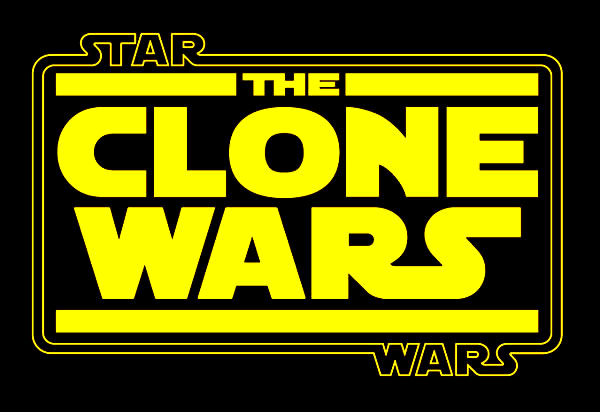 Let us know what you thought about the end of the Clone Wars.
Let us know what you thought about the end of the Clone Wars.


